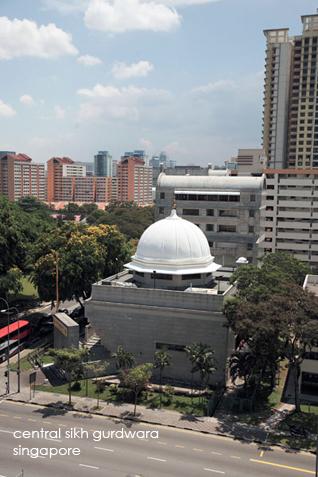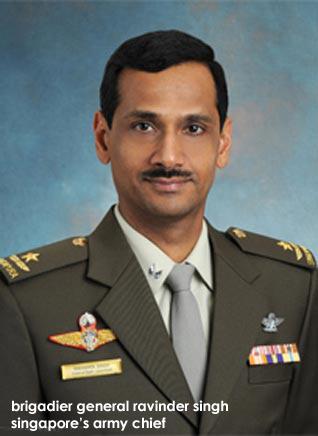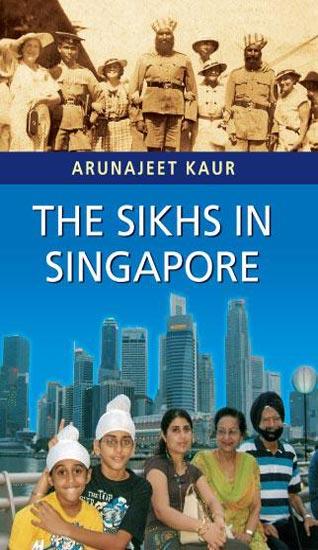Books
Sikhs and The City: Singapore
by GERARD McCANN
The following is the Introduction from Sikhs and the City: Sikh History and Diasporic Practice in Singapore, by Gerard McCann, Modern Asian Studies, Cambridge University Press, 2011.
The complete Paper by Dr. McCann has been selected sikhchic.com's Book of The Month for June, 2011.
On the 522nd birthday of Guru Nanak in 1990, Lee Kuan Yew, Prime Minister of Singapore, was presented with an honorary turban and kirpan in ‘a carefully choreographed piece of political theatre ... carefully massaged into congruence with Singaporean National Values.’
As stated by luminaries like Lee Kuan Yew on such occasions, Sikhs lay claim to a long and illustrious history in Southeast Asia, where they utilized colonial economic and political opportunities to great effect, as many did under the ethnic corporatism of the People’s Action Party in post-colonial Singapore.
Whilst the sight of the be-turbaned ‘Singh’ in Singapore has become increasingly rare, given inter-generational socio-cultural change, many Sikhs have chosen, and still choose, to make the island their home. This paper will examine the rich history of such Sikhs who formed a tiny minority of the South Asian population of Singapore. It will analyse colonial economic roles and socio-cultural formation, whilst links of Singaporean Sikhs to Punjab and their place within the post-colonial Singaporean state will preoccupy the latter portion of the paper. It shall thus attempt to give a brief holistic picture of over a century of Sikh presence in this small, but historically significant, island.
Despite the importance of the Sikhs in colonial Malaya and the Straits Settlements, traditionally falsely understood as merely related to the maintenance of order, there is a marked scholarly lacuna on the ‘community’. The weight of scrutiny has in fact been borne by Sikh students at universities in Kuala Lumpur and Singapore. Many have orthodox ‘Tat Khalsa’ agendas to assert, whilst others have produced balanced and highly informative theses, particularly those of R. S. Malhi and Amarjit Kaur.
A small number of community histories produced by local Sikhs, notably M. S. Lopo, Saran Singh and Mehervan Singh, have also delivered terrific anecdotal evidence, despite tendencies to historical myopia - common characteristics of many ‘heritage histories’, which celebrate the past (often towards emancipatory, redemptive ends) rather than soberly examine historical developments.
Some Malaysian Sikh scholars such as K. S. Sandhu and M. S. Sidhu have penned brief articles, and the field is lucky to have the excellent work of V. A. Dusenbery on Sikhs in post-colonial Southeast Asia and his comparisons with diasporic developments in North America.
Despite such contributions, however, there remains a paltry corpus of work on North Indians in the region, not least as the nature of South Asian migration to the Malayan ‘plantocracy’ has naturally dictated a historiographical bias towards studies of South Indians, particularly Tamils. This paper therefore attempts to further fill a salient scholarly gap and hopefully induce further probing of neglected aspects of South Asian diaspora in Southeast Asia.
It is hoped that this work can also speak to scholars of South Asia, the South Asian diaspora and Indian Ocean more broadly. To complement the work of Thomas Metcalf, the themes elucidated below (for example related to Sikh martiality or Indian moneylending in Southeast Asia) support the notion of India as a (if not the) seminal nodal point, or perhaps more accurately nodal cluster, in the British Empire and Indian Ocean world.
As Tony Ballantyne cogently suggests, experiences of sojourners added considerable cultural capital to political, economic and social negotiations in India to impact multiplicitous ‘webs of Empire’.
The key elements of these Punjabi ‘webs of Empire’ were the migrant networks. They were actually shaped by Punjabi kinship structures and underpinned by Punjabi religious institutions and religious networks, and were at a fundamental level a crucial response to the economic and cultural pressures of colonialism.
In Sikh contexts, therefore, places such as Singapore, Nairobi, and Vancouver came to supplement Amritsar or Patiala as ‘nodes’ within these ‘webs’. Cultural traffic was dependent both on events in Punjab and developments overseas, justifying Ballantyne’s claim that ‘Diaspora’ and ‘Empire’ were fundamentally simultaneous and interdependent. The ease of mobility of non-European traders, policemen, and labourers across the Indian Ocean has provided ample fodder for cultured histories of cosmopolitanism, as written by Sugata Bose and Engseng Ho. It is hoped this paper can tessellate well with these broader historiographical endeavours.
This piece is therefore concerned with placing the development of Sikh communities in Singapore not just in national terms, but also in transnational contexts. Nationalist historiographies in Singapore, like many in the region, have been somewhat naturally resistant to transnational methodologies in their analytical schema. Such emphasis was often seemingly incongruent with hegemonic ‘nation-building’ rhetoric - asserted though paramount ideas of ‘community self-help’ and images of interdependent ethnic ‘strands’ within the Singaporean societal ‘rope’.
Even many of the Sikh community histories noted above are permeated by this nation-building ethos, although Indian discourses (principally related to spirituality) also run though such narratives. Yet, scrutiny of local issues within transnational nexuses opens up new insights, as sections of this paper demonstrate. In the context of this topic, as Ballantyne insists, cognizance of the formation of religious boundaries in late nineteenth century North India, and the political economy of Punjab, the ‘homeland’ of the Sikhs, is of paramount importance.
Changing conceptualizations of Sikh civic virtue overseas made implicit (and often explicit) reference to Punjab, even if local developments soon created situations radically altered from social life in India and other areas of ‘diaspora’. This was manifested locally in apposite aloofness in Singapore and Malaysia to the rise of Sikh militancy in the 1980s, post-colonial issues with which relatively few scholars of Indian diaspora in Southeast Asia have been concerned.
In analysing discursive transfer throughout the British Empire and post-colonial world therefore, a more nuanced picture of continuity and change in various localities is attainable. It is with one such transnational, pan-imperial notion - ‘martial race’ - that this paper begins.
To read the complete Paper, please CLICK here.
The author teaches at the Faculty of History, University of Oxford, Old Boys’ High School.
[Courtesy: Modern Asian Studies, Cambridge University Press]
June 3, 2011
Conversation about this article
1: Gerard McCann (Oxford), June 15, 2011, 8:03 AM.
Many thanks for this honour!






